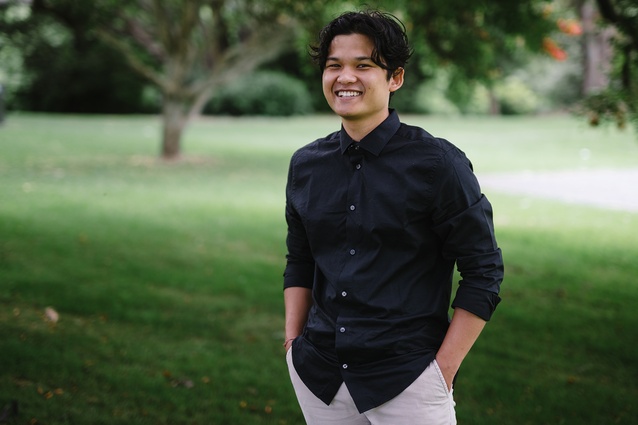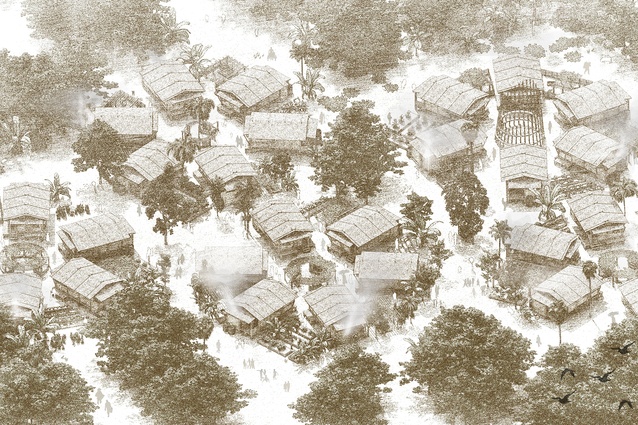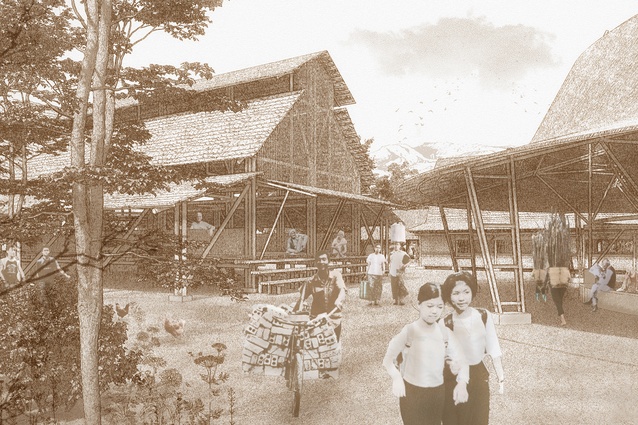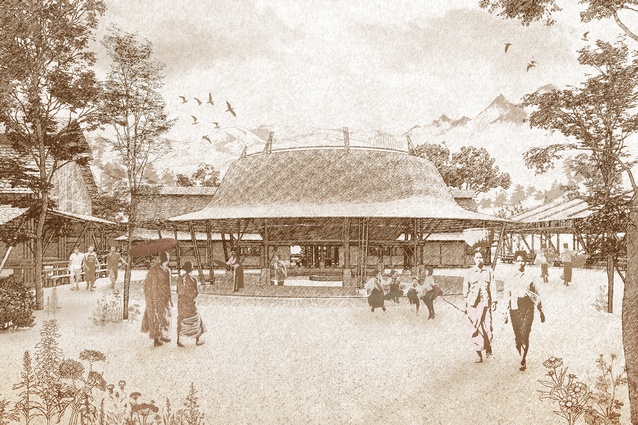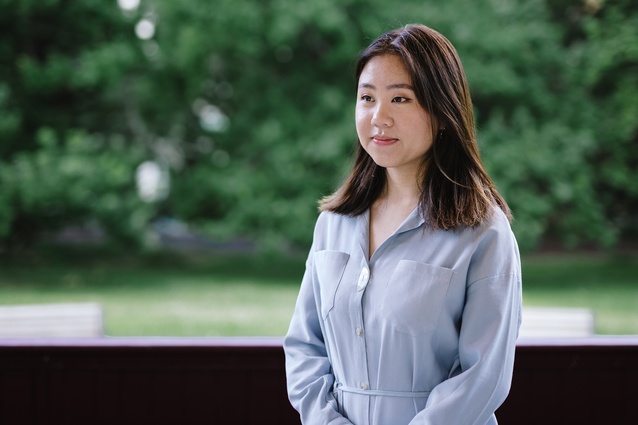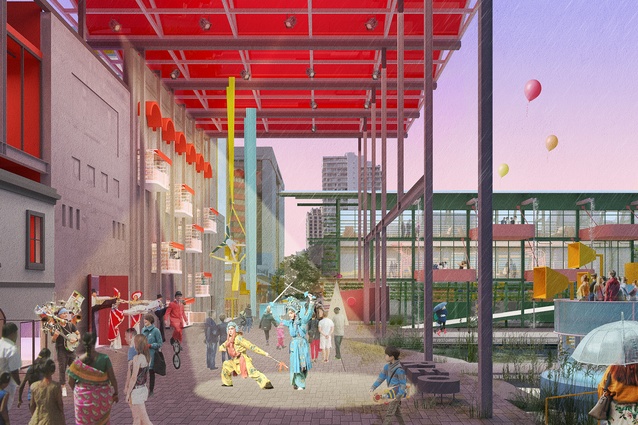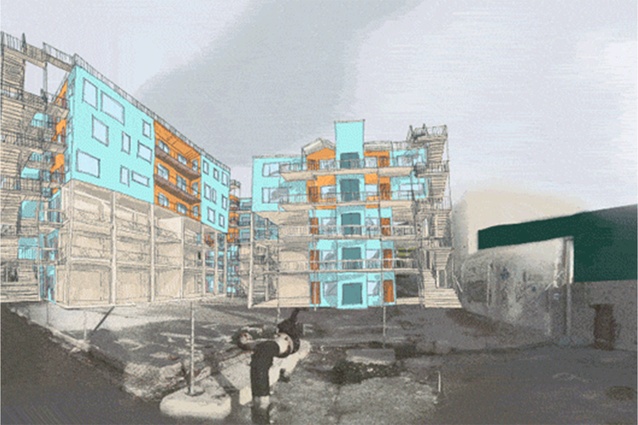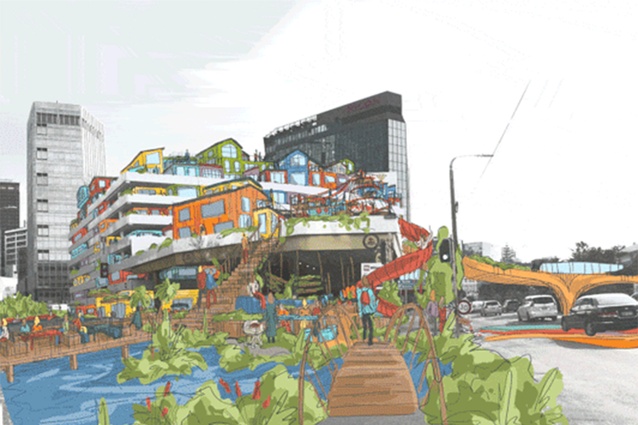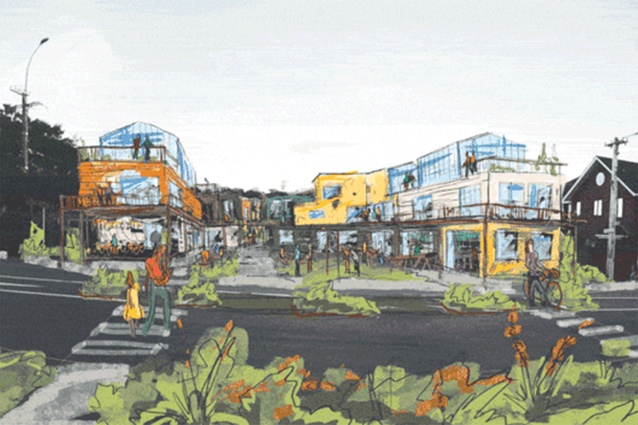2021 Resene Te Kāhui Whaihanga Student Design Awards winner
This year’s winner of the prestigious 2021 Resene Te Kāhui Whaihanga Student Design Award is Te Whare Wānanga o Wairaka Unitec School of Architecture student Myint San Aung.
Born in a Thai-Myanmar refugee camp, San and his family were resettled in Auckland in 2011 with the help of UNHCR (United Nations High Commissioner for Refugees) and the New Zealand refugee resettlement programme. He attended Otahuhu Intermediate and Selwyn College before enrolling to study architecture at Te Whare Wānanga o Wairaka Unitec School of Architecture.
San’s life and experience directly informed his winning project, which is entitled ပစ်တိုင်းတောင် (Pyit-Taing Htaung, Every time you toss it, it stands up) and asks the question: how can a community-based refugee camp experience that includes the building and occupation of vernacular architecture help address alienation and build resilience?
This year’s Student Design Awards judges – Te Kāhui Whaihanga President Judi Keith-Brown, architect Vajini Pannila, and designer and researcher Matt Ritani (Ngāti Toa Rangatira, Ngāti Kahungunu, Ngāti Koata) – said San is a refined, elegant, intuitive designer.
“His independent voice, confidence and maturity way beyond his years gives us an enormous sense of hope and optimism for the future. We are excited to present this award to someone we believe has the potential to be an architect the world will follow.”
The judges also awarded two Highly Commended projects.
Cindy Huang from Waipapa Taumata Rau, the University of Auckland School of Architecture and Planning, was highly commended for her project, ‘Library-City’, which radically rethinks Auckland’s mid-city with a scheme that includes an ambitious plan to daylight the Wahorotiu stream and build a network of spaces, systems, communities and opportunities above.
Alice Reade from Te Herenga Waka Victoria University of Wellington School of Architecture was highly commended for her project ‘Go Public’, which is about creating community connection and addressing the urgent problem of our national housing crisis, especially in Pōneke Wellington.
This year’s Student Design Awards were presented and judged virtually, due to public health restrictions.
Te Kāhui Whaihanga President Judi Keith-Brown said the projects the judges saw were all amazing. “A few of the overriding themes have been: civic mindedness, and caring for and giving back to communities; concern for our natural environment, in particular our waterways; “joyful” architecture – Sir Ian Athfield, Roger Walker and others from the joyful ’80s would be pleased; and pedestrian-friendly architecture that makes our cities more equitable places to live.”
Twelve final-year students from New Zealand’s three architecture schools — Te Herenga Waka, Victoria University of Wellington, Waipapa Taumata Rau The University of Auckland and Te Whare Wānanga o Wairaka, Unitec — were chosen by their universities to enter the annual Student Design Awards, which carries a top prize of $5000.
The Resene Te Kāhui Whaihanga 2021 Student Design Awards are presented by loyal supporter of New Zealand architecture, Resene.
CITATIONS
Winner: Myint San Aung
ပစ်တိုင်းတောင် Pyit-Taing-Htaung; Every time you toss it, it stands up

The title of this refined and affecting project refers to a traditional Myanmar children’s toy that remains upright regardless of attempts to knock it down. This symbol of resilience and resistance is key to understanding this project, which is imbued with personal lived experience of growing up in the Thai-Myanmar camp.
San’s design for a family of architectural typologies that could be used to create a more human-centric refugee community in the Southeast Asia region is a considered and empathetic response to the question: How can refugee camp architecture build community reconnection, healing and resilience? His response is both simple and complex, and responds to both the global refugee crisis and the minutiae of life as a refugee.
Through the use of soundscapes, animations and hand drawings rich with intimate detail, San has woven a powerful story about people and place, as well as giving us a sense that these buildings already exist, and we could go there; that real people have built them, and use them. His designs for typologies including houses, a market, school, meeting house, bathroom block, and adult education classroom, are delicate and beautiful yet functional and refined, with a powerful sense of the social relations of architectural geometry.
This architecture is grounded, mature, confident and clear, and expresses a rich cultural integrity imbued with compassion, dignity and an innate knowledge of climate and customs. San clearly understands how architecture can inspire hope, and how it can empower people or diminish them, and uses this knowledge as the underpinning for a project that has real potential to enact change on a global scale.
Highly Commended: Cindy Huang
Library City

The commercialisation of civic life and the ongoing effects of the pandemic have resulted in an Auckland city hollowed out by corporate interests. What is left of free and accessible public space in the city when neoliberal agendas have conspired to dominate it? The downtrodden Auckland Central Library, the near-abandoned St James Theatre and the faded ASB tower provide the site for a radical rethink of mid-city that includes an ambitious plan to daylight the Wahorotiu stream and build a network of spaces, systems, communities and opportunities above.
The library building itself is replaced by a revised typology and purpose for libraries—one that radicalises the institutional framework around collecting and managing knowledge, and reorients it towards social learning, a social-structural catalyst for shared knowledge, activism, civic engagement and the democratisation of public space. Its footprint is enlarged by the deployment of social knowledge ‘machines’, widgets that can be sent out into the city to reclaim its spaces. From mobile cinemas to agricultural shells, these machines are tools for learning that can be plugged into the urban network and used to rewire it for the better.
Above a reinstated and consolidated wetland ecosystem, a series of porous programmatic corridors foster community connection and knowledge sharing. Kai Street acknowledges plethora of food knowledges and practices; the Common Room is a community kitchen and public dining space; the Bank of Curiosities is both a repository and discovery space, like a shared memory bank.
This detailed and intricate, yet compelling and powerful project is joyful, uplifting and inspiring, but it also solves a problem: the cultural void of central Auckland. Firmly rooted in its site, carefully considered, and enlivened by a clear-eyed understanding of where we are as a city and a country, Library-City provides a vision of a place we want to live in right now. Someone call the Mayor.
Highly Commended: Alice Reade
Go Public: Architecture as Activism
Highly Commended | Go Public by Alice Reade. A proposal for housing in Tangi Te Keo, Mount Victoria.
What if architects weren’t always concerned with serving the needs of wealthy clients and instead used their skills and knowledge to design processes, start conversations and interrogate power structures? What if architecture was about activism rather than profit?
These are questions that Alice is beginning to answer in this utterly unique, heartfelt project, which is all about creating community connection and addressing the urgent problem of our national housing crisis, especially in Pōneke. She argues that architects have a responsibility to be positioned and political agents for change, and advocates for those in need, particularly the 1% of New Zealanders who suffer from severe housing deprivation.
Using image-making to propose radical ways of quickly housing large numbers of people in unused urban spaces, Alice has composed a series of provocations designed to start conversation and debate, and has created an architecture of activism, rather than plan and detail. The hand-built component of her project, a multi-purpose cart or trailer built from reclaimed and recycled materials, is evidence of her hands-on approach to enacting real social change, as well as her acute tectonic sensibilities.
Alice’s fearless presentation of her work is imbued with her passion and commitment to fostering community dialogue, rather than accepting the divisive nature of social media discourse and calling it ‘engagement’. Her intuitive understanding of the potential of architecture to redistribute power and uplift those at the bottom of our housing hierarchy is exciting, and we can’t wait to see how her thinking and practice impacts and evolves the housing crisis debate.
Highly Commended | Go Public by Alice Reade. The Cart in Tangi Te Keo, a bike trailer to provide a mobile platform for community discussions.
FINALISTS
Waipapa Taumata Rau, The University of Auckland School of Architecture and Planning
- Marty Clark-Dow
- Cindy Huang
- Maggie Hubert
- Rachael McKillop
Te Whare Wānanga o Wairaka, Unitec School of Architecture
- Myint San Aung
- Rhiannon Churchward
- Siān Singh
- Khamis Shiblaq
Te Herenga Waka, Victoria University of Wellington School of Architecture.
- William Creighton
- Chris Gandhi
- Alice Reade
- Maria Walker
See project descriptions, full citations and images at nzia.co.nz

